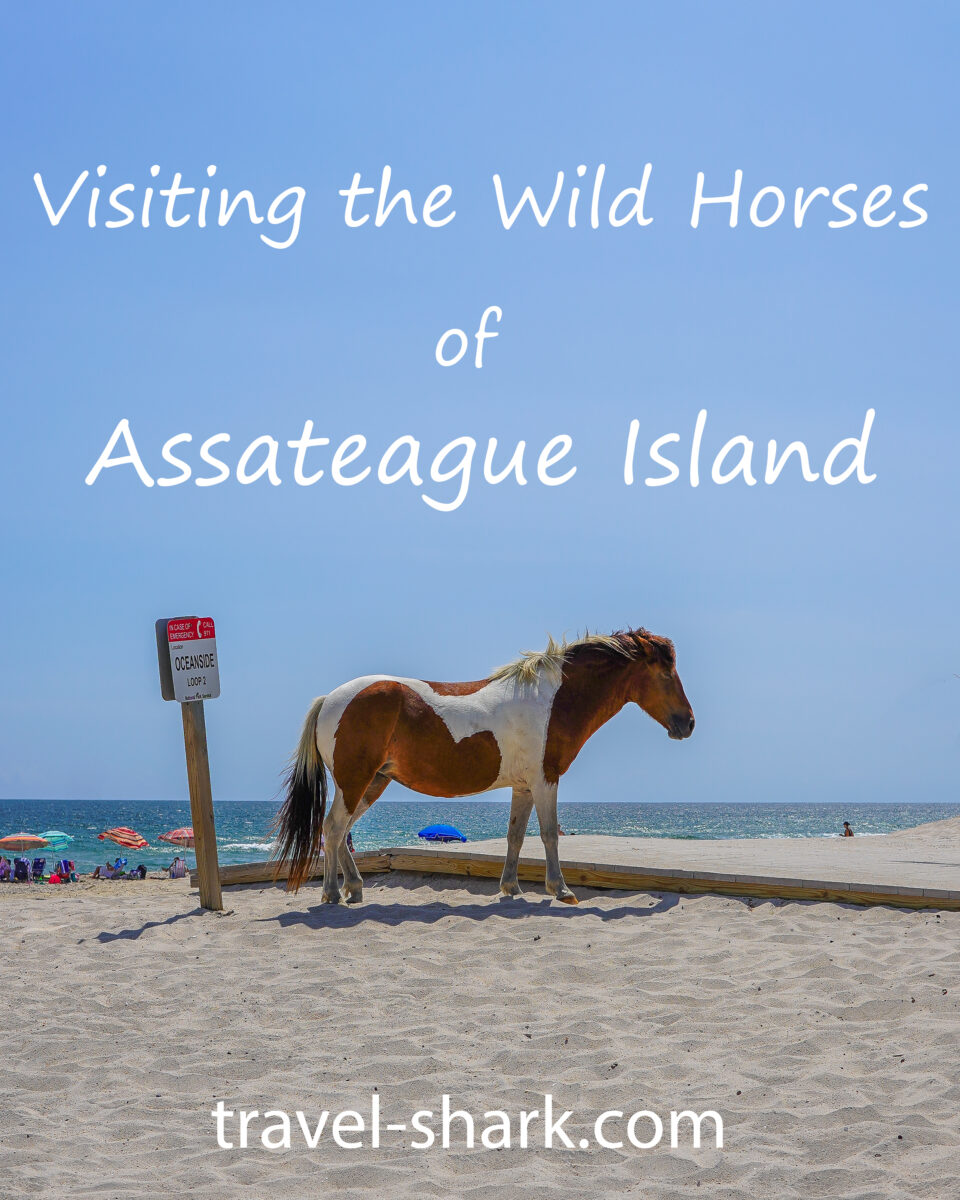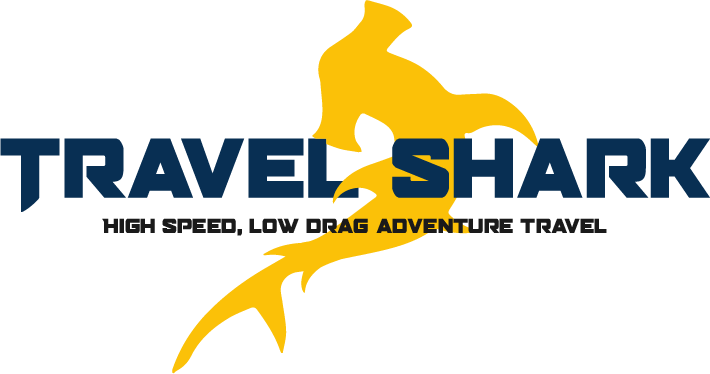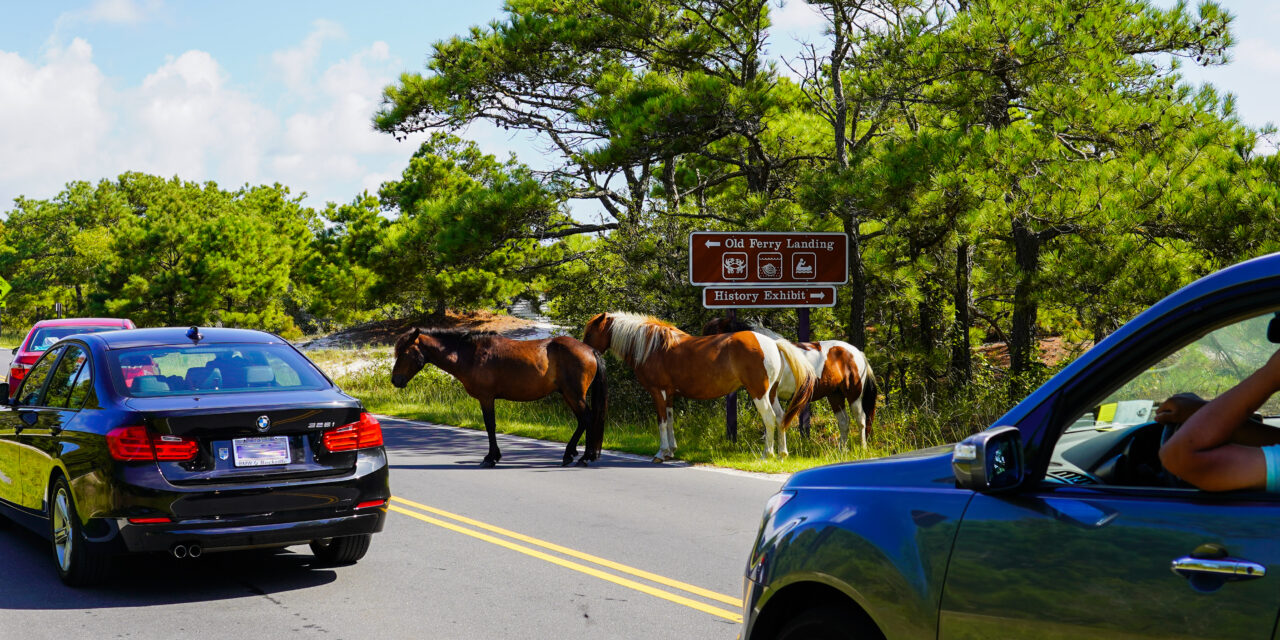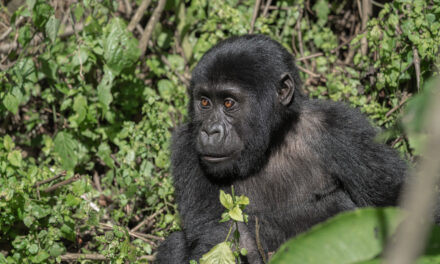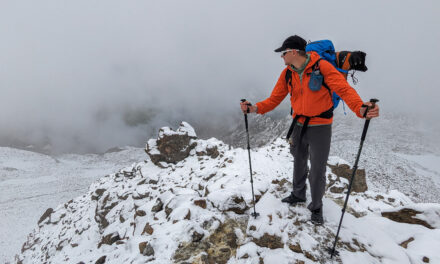Visiting Assateague Island will bring you sandy beaches, salt marshes, maritime forests, coastal bays, and of course, the famous wild horses.
A 37-mile (60 km) long barrier island located off the east coast of the United States, Assateague Island is split between two states. The northern two-thirds of the island is in Maryland while the southern third is in Virginia.
While both sections of Assateague Island have wild horses, the Maryland section contains the majority of the Assateague Island National Seashore and Assateague State Park landmass.
The Virginia section only contains Chincoteague National Wildlife Refuge and a one-mile stretch of land containing a lifeguarded recreational beach and interpretive facilities managed by the National Park Service (NPS).
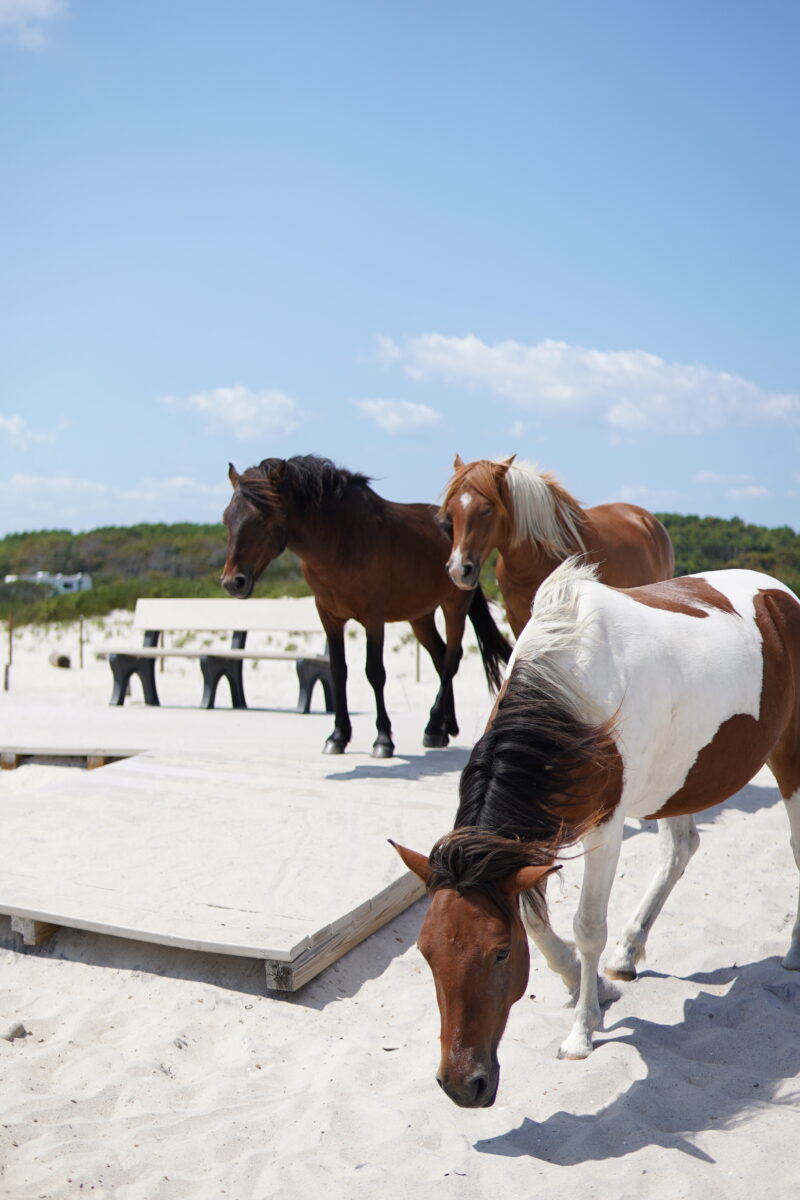
Why are there wild horses on Assateague Island?
According to legend, the wild horses of Assateague Island are the descendants of horses that survived a shipwrecked Spanish galleon along the coast.
While not entirely confirmed, DNA evidence indicates that the modern population of these horses includes the closest living descendants of Spanish horses brought to the Americas in the early 1500s.
Adding further strength to this theory, a Spanish shipwreck was recently discovered in the waters off Assateague.
You’re free to draw your own conclusions here, but the horses arrived somehow, and that’s a pretty clear link to Spain.
Regardless of how they arrived, they’re clearly here to stay, and here is how to see them.
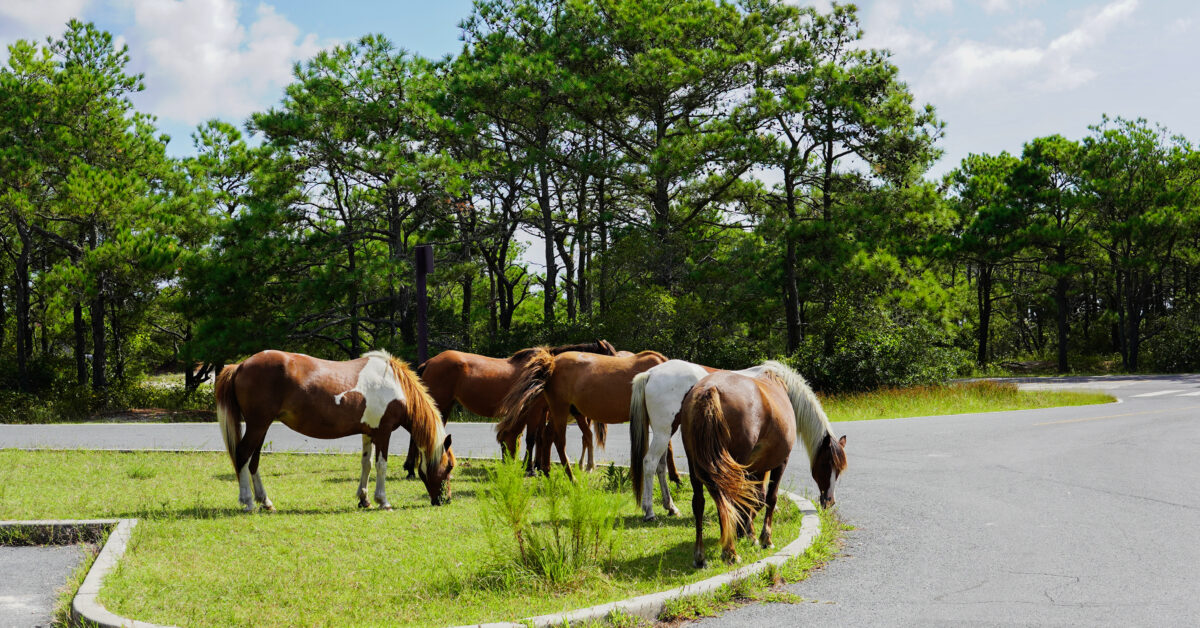
How to see the wild horses on Assateague Island.
Honestly? Just drive along the island’s roadways and you’ll find them eventually.
Just be sure to follow all regulations including not stopping or parking along the roadways as this can cause potential hazards.
At the same time, you may occasionally be forced to stop so remain vigilant and don’t speed while driving around the island.
I saw more horses while in my car than anywhere else. There were considerable traffic backups due to them blocking the road without a care in the world.
Beyond the roads, the horses can be found in the marsh areas, amidst the trees, on the beach, and further down the island in the National Park’s OSV area (Over Sand Vehicle).
After driving, walking along the regular beach gave me the most success; while I found the marshes to be tricky to maneuver. There are several walkways that have been built for you to traverse them, but I didn’t see a single horse in the marsh while I was there.
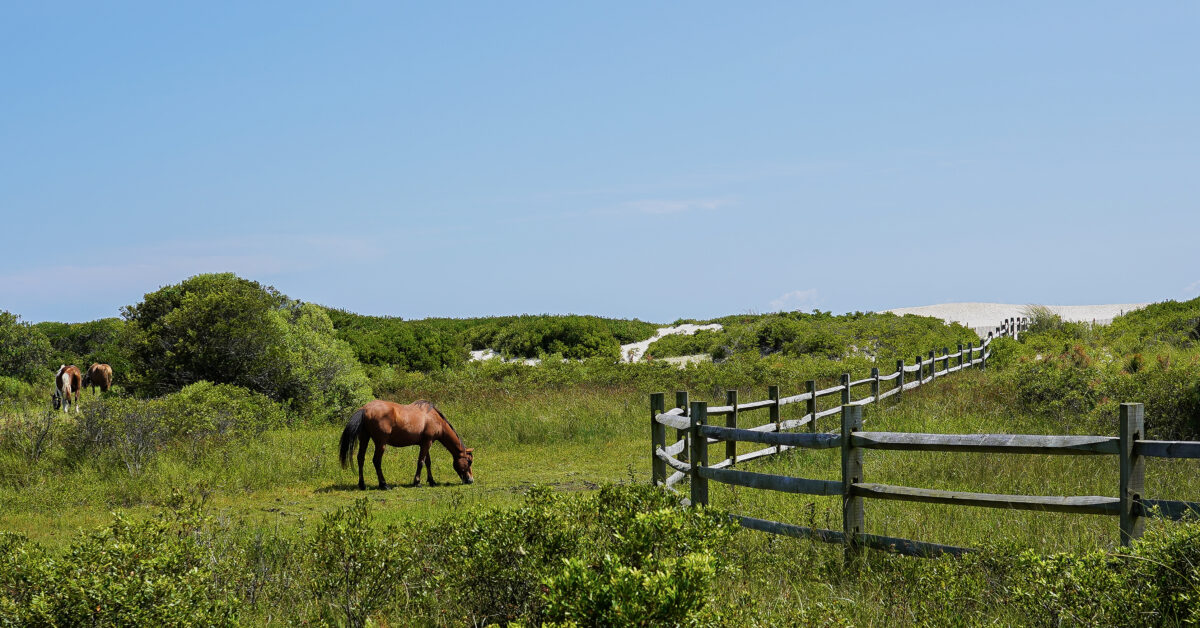
Divas
Although the island is quite large, the concentration of horses in and around the tourist areas leads me to believe that the horses—some of them at least—enjoy the beach and being in the presence of humans.
These may be wild animals, but they’re not skittish in the least. There are actually park employees who roam the main tourist areas, particularly the beach and parking lots to back the horses up when they start to get too close.
The policy is to stay at least 40 feet from any wildlife.
I know 40 feet sounds like a far distance, but you’ll routinely be much closer. Just be mindful of your distance because the island staff will say something to you.
I had one sneak up behind me while I was taking pictures of another. A member of the park staff shooed it off, but she did say to me, “That was pretty close.”
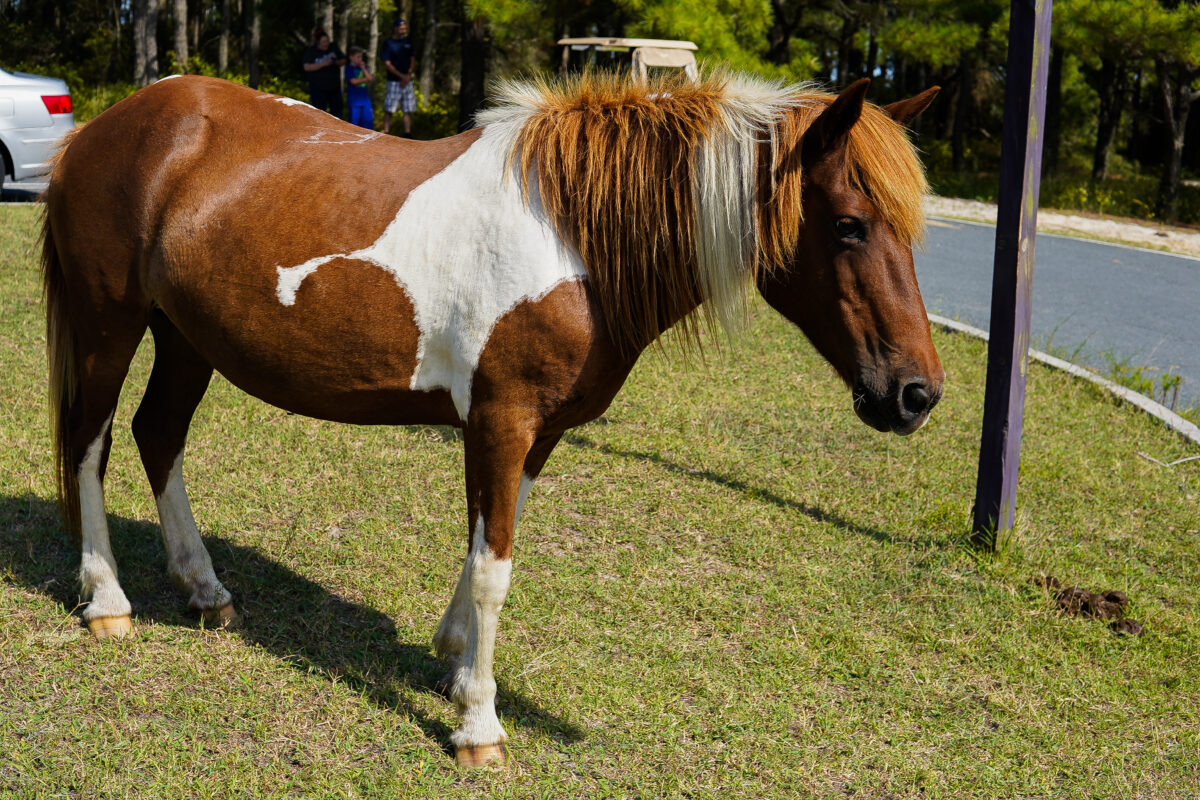
Camping
If you’re here for any longer than a day trip and wish to camp, there are several options available.
This information pertains to the Maryland section of the Island as there is no camping allowed in the Virginia district.
National Park Service Reservation System:
Campsite reservations are required from March 15 through November 15. Reservations are available six months in advance.
From November 16 through March 14, campsites are on a first-come first-served basis.
All reservations can be made by calling the toll-free reservation line: 1-877-444-6777 from 10:00 a.m. – 10:00 p.m. EST or visiting www.recreation.gov
All reservations cost $30 per night except for groups which cost $50.
*Be aware that nearly all reservations for weekends are filled the first day that they become available.*
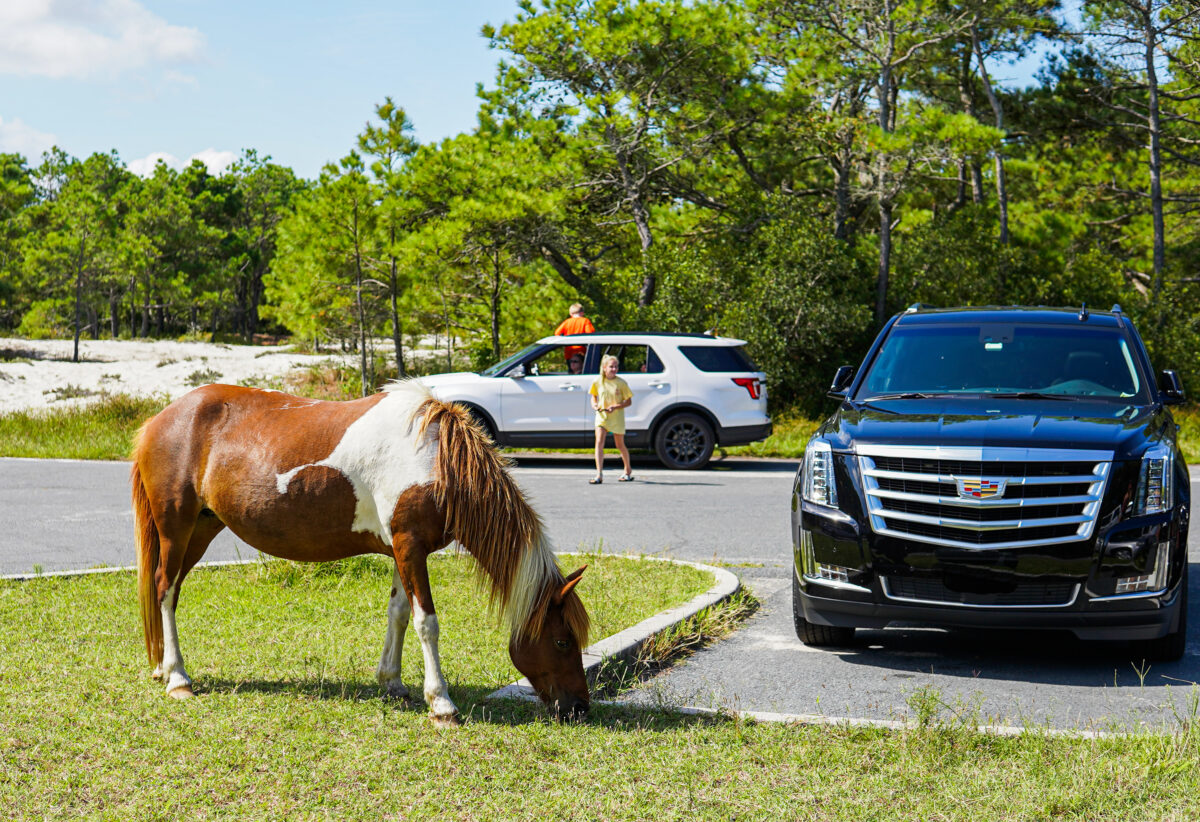
Assateague Island National Seashore Campgrounds:
Oceanside Drive-in: Tents, trailers, and recreational vehicles (no hookups). Sites have a picnic table and a fire ring.
I didn’t get to experience this, but it looked incredibly fun. While there, I saw probably close to 100 vehicles parked along the oceanfront, complete with chairs, coolers, and food.
OSV permits must be purchased online by visiting recreation.gov, or by filling out the online application at a kiosk in the Ranger Station or Toms Cove Visitor Center when you arrive.
These permits cost anywhere from $110-$200 depending upon the type of access desired.
Before even trying for a permit, be sure that you have a vehicle capable of navigating loose sand. If you show up with a regular car, you’ll be denied.
Oceanside Walk-in: Tent-only sites are located 100-200 feet from centralized parking areas. Sites have a picnic table and a fire ring. Walk-in sites are closed from November 16 through March 14.
Bayside Drive-in: Tents, trailers, and recreational vehicles (no hookups). Sites have a picnic table and a fire ring. A Drive-In “Generator-Free Zone” is located in Bayside B Loop.
Group Camping: Organized clubs and affiliated groups must use group campsites. Tent-only sites are located 100-200 feet from a centralized parking area. Sites have a picnic table and a fire ring with a grill. Group campsites can be reserved year-round, up to 6 months in advance at $50 per night per site.
Horse Camp: There are two campsites for horse camping available from October 16 through April 14. Each site accommodates up to 6 people and 6 horses. The fee is $50 per night per site. Generators are permitted from 6:00 a.m. to 10:00 p.m. Sites can be reserved up to 6 months in advance.
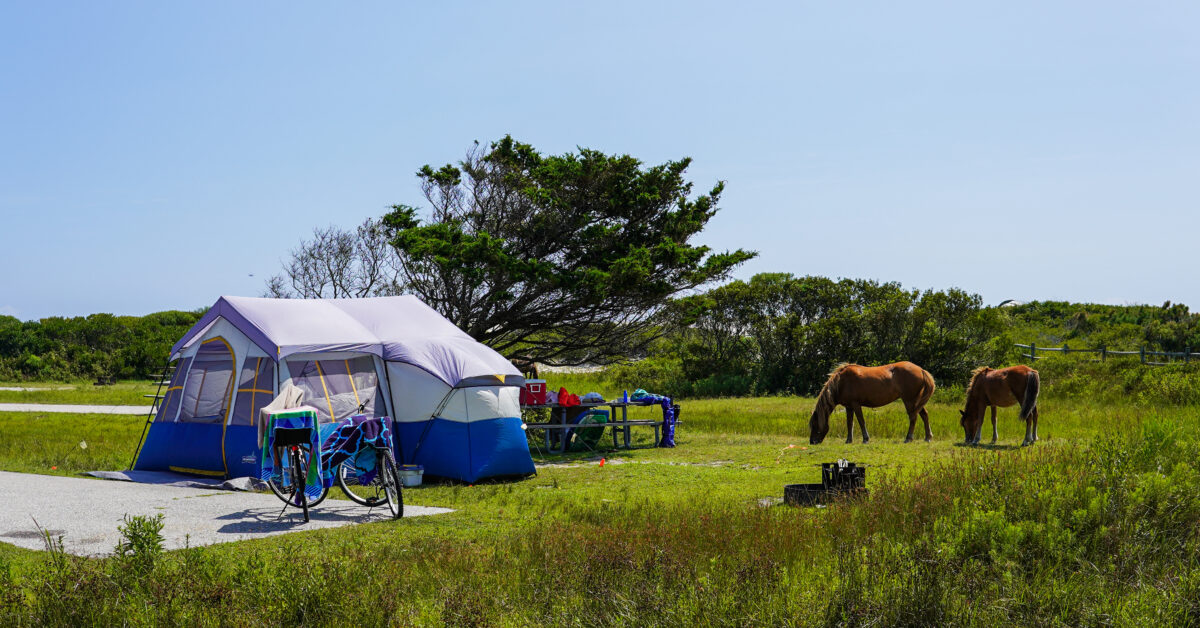
How to Get to Assateague Island
Getting to Assateague Island is fairly simple.
There are only two entrances to Assateague Island National Seashore, north and south.
Assateague’s north entrance is at the end of Route 611, eight miles south of Ocean City, MD. The south entrance is at the end of Route 175, two miles east of Chincoteague, VA. There is no vehicle access between the two entrances on Assateague Island and the parks are separated by a fence so you won’t be walking across either.
If you’re coming from farther away and need to fly, the closest airports to Assateague Island are Ocean City Municipal Airport and Salisbury-Wicomico County Regional Airport. These are both in Maryland, but there is no public transportation to the island so you’ll need to rent a car.
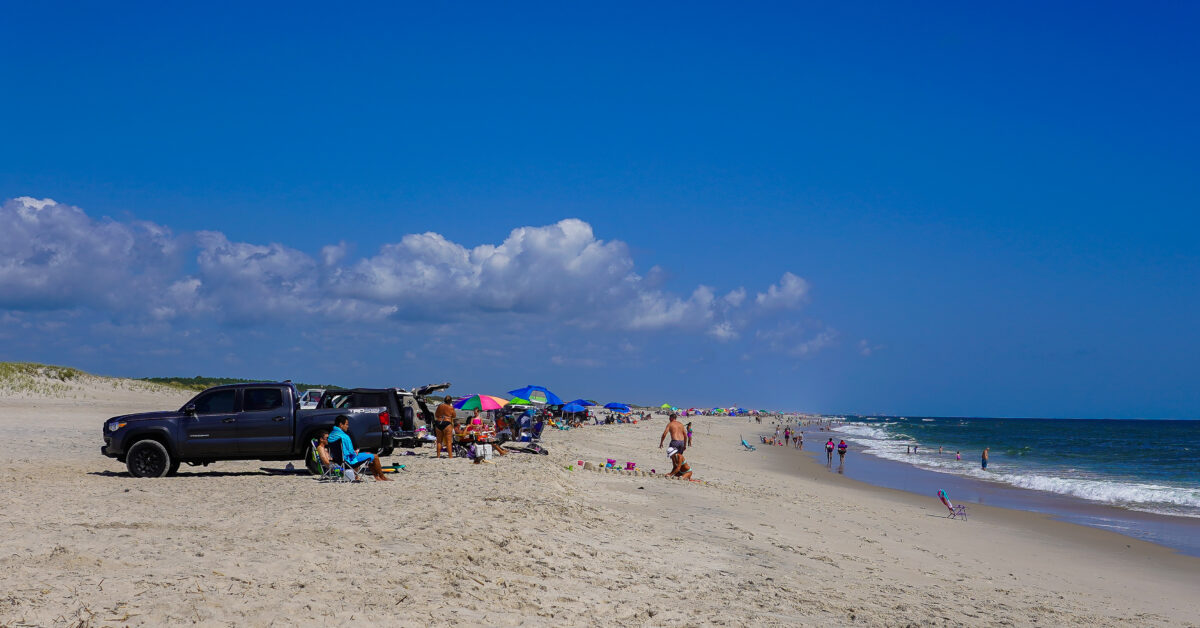
The Wild Horses of Assateague Island
Overall, I found this to be quite a unique experience and well worth the trip. Is it on the same level as the wild pigs in Exuma, Bahamas? Maybe not to some, but if you’re a horse person, then definitely. This is also domestic to the US, much more accessible than Pig Beach, and far cheaper.
Have you ever been to Assateague Island? What were your thoughts on the wild horses? Let me know in the comments below!
DID YOU ENJOY THIS ARTICLE? PIN IT!
